Saltwater fish aquariums are fascinating but harder to manage than freshwater tanks. However, by following a procedure, it’ll be a delightful journey. These tanks also have different kinds of fish than fresh water. To address this, the 10 most suitable saltwater aquarium fish for beginners are the following. Some other points including adding ocean water to your saltwater fish aquarium, are part of this article.
Content Table
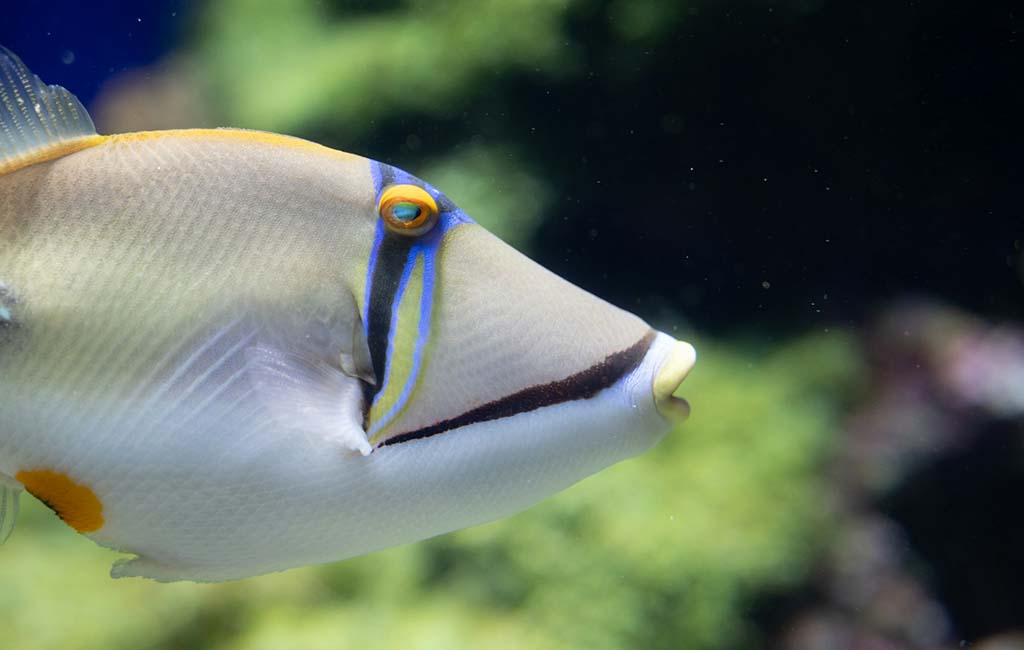
The Beginner Advice to Saltwater Tank Fish
Is keeping a saltwater tank easy? The answer is yes for a basic saltwater tank. Same time no, for a little bit advanced in setup or advanced in fish. If you are thinking about setting up a saltwater tank, remember a few points. It’ll make your saltwater tank-keeping journey easy.
Large Tank
Buy a medium or large tank because it can dilute your mistakes. Moreover, small tanks require too much care, have less population, appear messy, and require frequent maintenance. It should be a minimum 60-gallon tank.
Shallow Tank
The water depth should be shallow. Higher depth needs more maintenance and reduces the swimming surface for the fish. Moreover, higher depth needs extra equipment, i.e., heater, higher filtration system, etc. These systems also require maintenance, which is a burden. If you feel higher evaporation, use an automatic tank refiller or auto top off kit. It’s easier to maintain than several pieces of equipment.
Tank Location
Place the tank in the hallway, where you can always keep an eye on your fish. Moreover, it’s a smart way to use it as a focal point. However, remember, don’t directly expose it to the sun. It’ll give a boom to algae growth, which is hard to control.
Filtration
Saltwater tanks require extra filtration than freshwater tanks. You can use several filters at a time to meet the conditions.
Hand On Back (HOB) filters
They effectively remove ammonia and nitrite from the tank. Use hang-on back filters with bio wheel and activated carbon. Clean the filtration pads frequently to avoid salt accumulation and maintain optimal flow. They will do a better job up to the 50-gallon tank.
Canister filter
Canister filters do the best job for more than a 50-gallon saltwater tank. They will help you in all types of filtration, i.e., chemical, mechanical, and biological.
Sumps
Sumps are another filtration option. They are placed below the main tank’s overflow drains. It uses filter pads to remove debris and bacteria to denitrify the water. After setting up a sump tank, they are also helpful in volume addition and live food growth.
Protein Skimmers
Protein skimmers do water filtration aggressively and make the water crystal clear. It’ll help you to avoid biological waste in the tank.
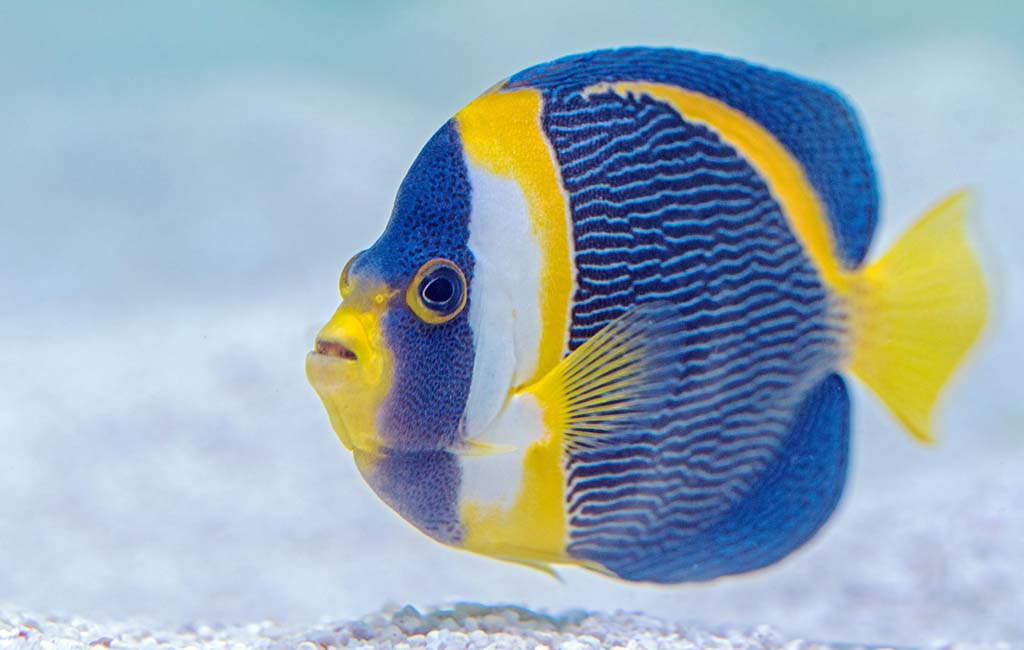
Substrate
Aragonite-Based Sand: Instead of silica sand, go with aragonite-based sand. It’s calcium-based sand and looks very natural in the reef environment. Don’t select fine textures, as they blur the view as soon as there is some disturbance. While the coarser particles don’t trap the particles a lot. Therefore, go with the medium size particles.
Sand: If you want to add sand, opt for natural sand, as they naturally inherit the bacteria. Even after rinsing it in fresh water, doesn’t lose the bacterial count. However, don’t borrow the sand from some fellow aquarist because it can cause disease spread in your tank. You can wash dry sand in the bucket to remove debris and diatom and minimize the tank cloudiness.
Mud: Mud is also a good option for growing macroalgae and seagrass in the tank. In such a case, choose calcium carbonate-based mud like Halimeda. Never go with black mud.
Rock
While selecting rocks for your saltwater tank, choose curved and creviced rocks as they have more surface area for bacteria. Limestone rocks and coral skeletons are good due to their natural appearance, porosity, and buffering properties. Other materials like glass and volcanic rocks may tempt but lack porosity. Pores in the rock provide a habitat for beneficial bacteria to fight against nitrates.
The rock should be lightweight and have visible pores and channels. Rocks are classified into three degrees based on the bacterial colony.
- Fresh live rocks are ready to use after only pests, i.e., aiptasia, and algae, i.e., bryopsis, inspection.
- The shipped live rocks need cycling and curing.
- Dry rocks take a long time for bacterial growth.
Therefore, choose fresh live rocks to reduce the tank building duration. Introduce a 1.5-pound rock per gallon in your saltwater tank.
Water
Use RO/DI water as they don’t have solid particles. You can buy it from your nearby pet store. After that, add the correct amount of the salt and check it with the refractometer. Temperature changes the specific gravity value. So, remember it while making salt water. After that, slowly add the water into the tank to avoid any disruption in the substrate. You can do it manually and with the help of a pump.
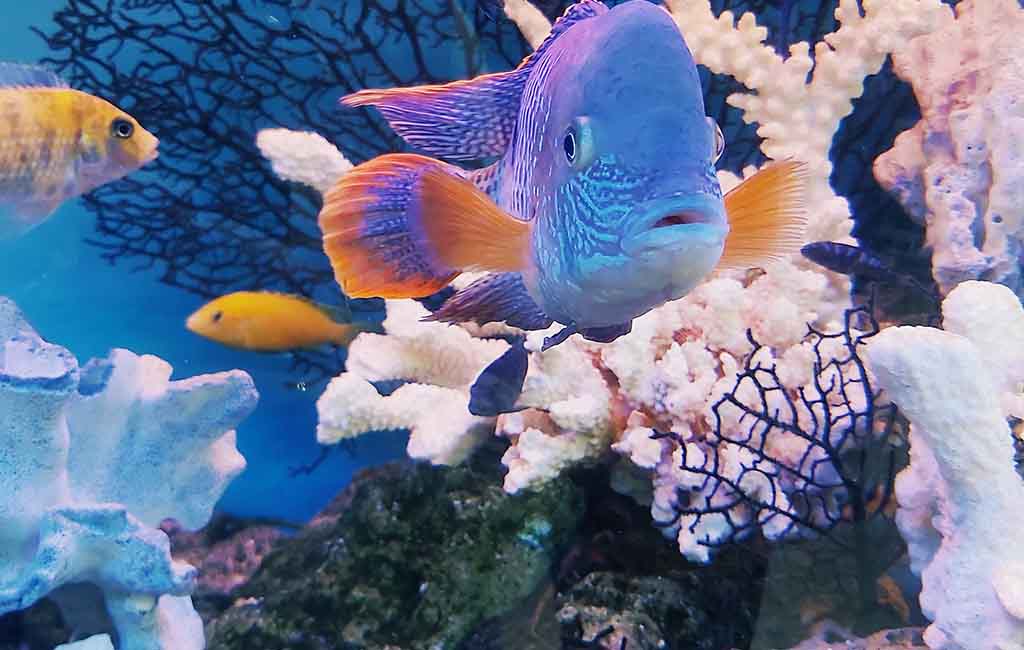
Equipment in the Tank
After settling the sand, install all instruments in the tank. It includes a HOB filter, pump, powerhead, and air stones.
Lighting
Lighting is another considerable aspect as it affects the temperature, plant growth, and pets’ day and night cycle. Use saltwater lighting for a normal reef viewing tank. 10-12K lights do well with the macroalgae tank. Several lighting options come here to help you.
- Standard Fluorescent Bulbs are suitable for only fish tanks because they can give bloom to algae growth.
- Compact Fluorescent Bulbs are old but still do an excellent job for low lighting environments. They provide good light coverage, even-lighting, and are bright at the center.
- Metal Halide are excellent with proper ventilation because they draw high electricity and produce high heat.
- LEDs are good for dealing with the variation in the tank. They provide high output, low heat, long life, and low-profile fixtures.
Cycling and Nutrient Balance
Before introducing the saltwater tank fish pets, cycle your tank. It’ll settle down all of the water parameters. After cycling, introduce aqua pets in the tank. Always check the nutrient level, as nitrites can prove fatal for your tank.
Is It Possible to Put Ocean Water in the Saltwater Fish Aquarium?
Yes, but with care. Ocean water contains several beneficial bacteria suitable for thriving pets and the entire tank ecosystem. However, you must be cautious about the pathogens. If you’re a beginner, then prepare your solution. It’ll keep you on the safe side and make your aquarium journey tedious.
The 10 Best Saltwater Tank Fish for Beginners
Here are the 10 best saltwater fish for beginners. They will kickstart your saltwater tank journey awesome.
Ocellaris Clownfish
| Scientific name | Amphiprion ocellaris | 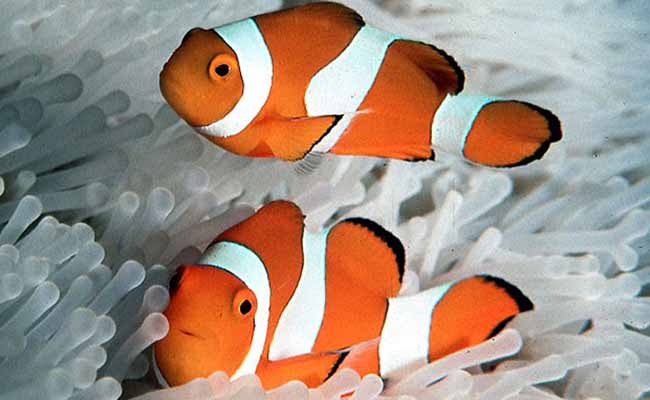 |
| Temperament | Peaceful | |
| Habitat | Live around reefs with anemones | |
| Advice to keep in a home aquarium |
|
Coral Beauty Angelfish
| Scientific name | Centropyge bispinosa |  |
| Temperament | Semi-aggressive | |
| Habitat | Live around the reefs with higher hiding spots | |
| Advice to keep in a home aquarium |
|
Lawnmower Blenny
| Scientific name | Salarias fasciatus | 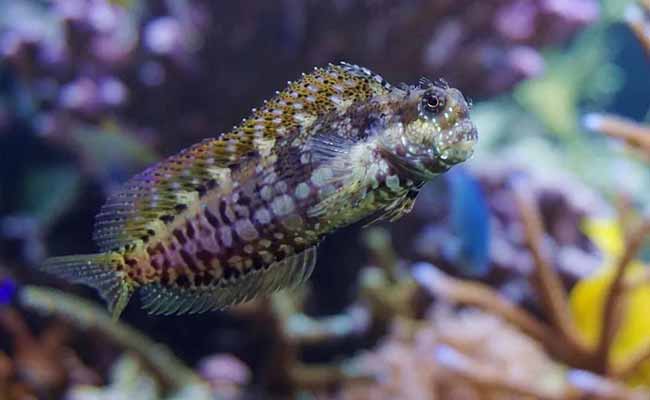 |
| Temperament | Peaceful | |
| Habitat | Found in rocky areas with a lot of algae | |
| Advice to keep in a home aquarium |
|
Clown Goby
| Scientific name | Gobiodon spp. | 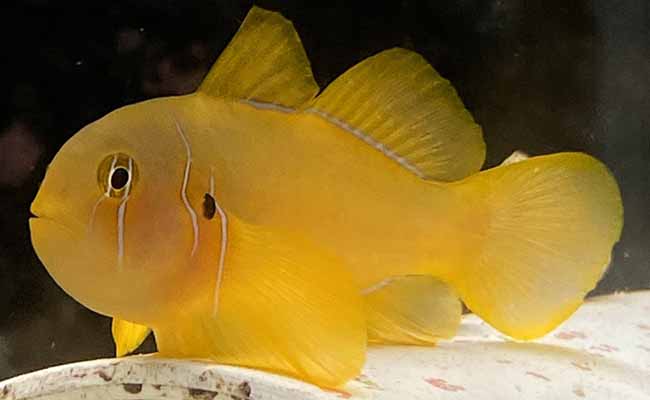 |
| Temperament | Peaceful | |
| Habitat | Live around reefs. They perch on live rocks and corals | |
| Advice to keep in a home aquarium |
|
Firefish Goby
| Scientific name | Nemateleotris spp. | 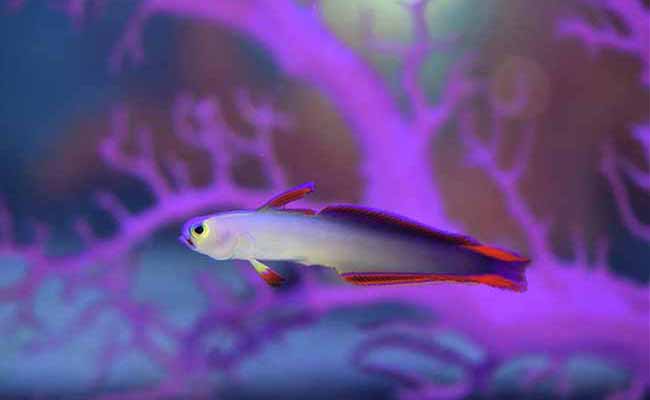 |
| Temperament | Peaceful | |
| Habitat | Rocky reef areas with a sandy bottom | |
| Advice to keep in a home aquarium |
|
Yellow Watchman Goby
| Scientific name | Cryptocentrus spp. | 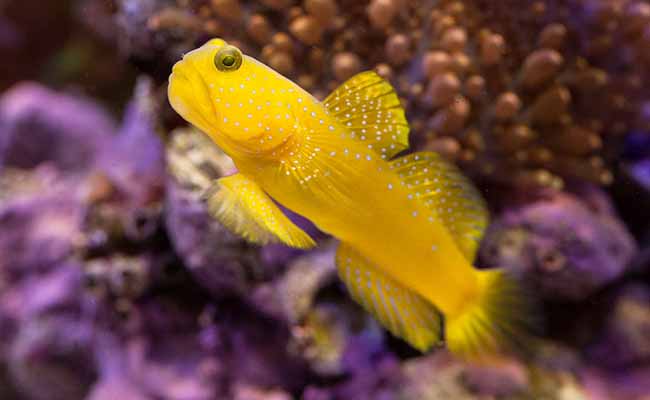 |
| Temperament | Peaceful | |
| Habitat | Reef environment in sandy areas | |
| Advice to keep in a home aquarium |
|
Hawkfish
| Scientific name | Cirrhitidae | 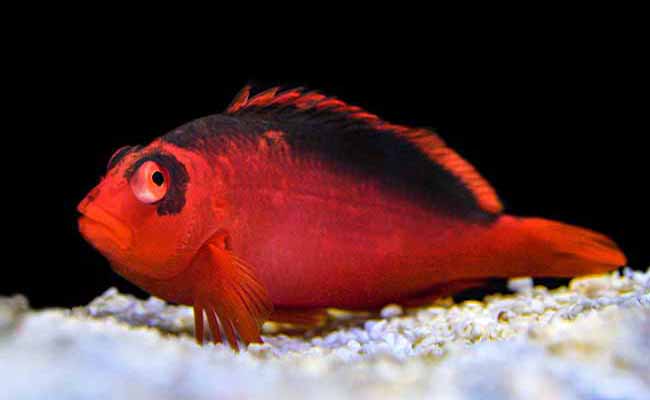 |
| Temperament | Aggressive | |
| Habitat | Perches on corals and rocks | |
| Advice to keep in a home aquarium |
|
Dottyback
| Scientific name | Pseudochromidae | 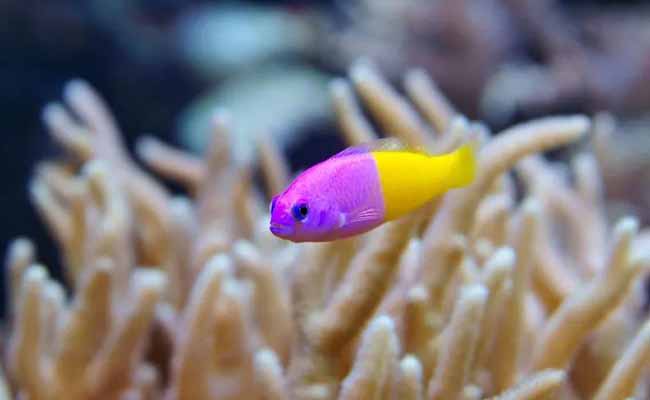 |
| Temperament | Semi-aggressive | |
| Habitat | Present at rocky areas with plenty of hiding spots in the reef environment | |
| Advice to keep in a home aquarium |
|
Six Line Wrasse
| Scientific name | Pseudocheilinus hexataenia | 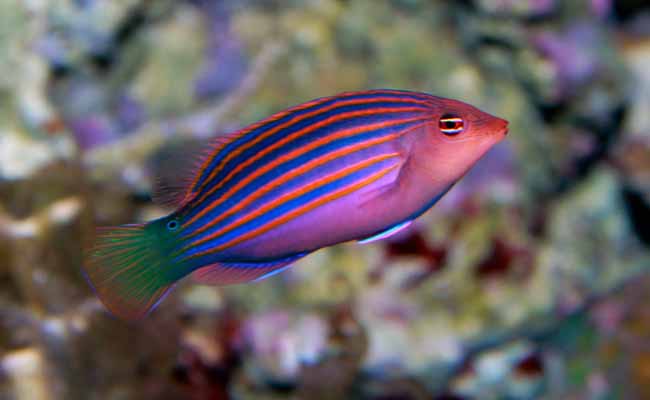 |
| Temperament | Semi-aggressive | |
| Habitat | Around coral reefs that have a handful of hiding spots | |
| Advice to keep in a home aquarium |
|
Royal Gramma
| Scientific name | Gramma loreto | 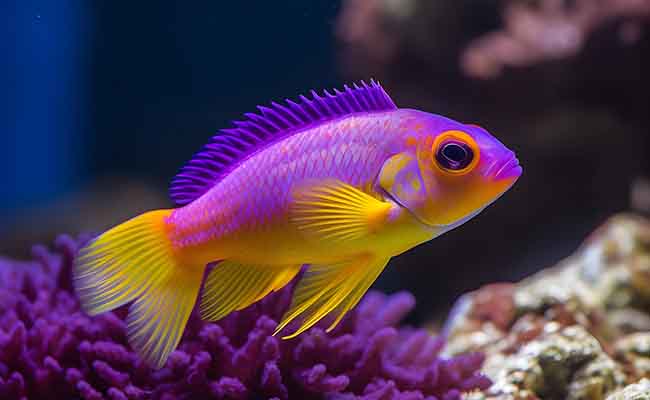 |
| Temperament | Peaceful | |
| Habitat | Rocky area with hiding spots in the reef environment | |
| Advice to keep in a home aquarium |
|
How Many Gallon Tank as a Beginner Saltwater Tank?
For a saltwater aquarium beginner, a medium-sized tank, i.e., greater than 30 gallons, is the most suitable option. You can extend the size limit up to 90 or 120 gallons tank. The large size help will help to dilute your mistakes that are part of the beginner journey.
Easy Equipment Should Be For Saltwater Fish Aquarium
There is some equipment that you must have for starting a saltwater tank. Here is the list of these equipment.
| Tank | Powerhead or wave maker | Protein skimmer for biological filtration | Proper lighting |
| Fish net | Salt mixer | Thermometer | Hydrometer to check the salinity of water |
| Heater | Saltwater | Algae scraper | Live sand or crushed coral substrate |
- HOB filter for less than 50-gallon tank and canister filter for higher than 50-gallon
- Water parameter testing kit, i.e., pH, ammonia, nitrate, nitrite, etc.
- Ground Fault Circut Interrupter (GFCI) outlet
The Final Word
Saltwater fish aquariums are hard to keep. However, the journey is delightful by following tips like shallow large tanks, proper lighting, etc. Six-line Wrasse, Hawkfish, Royal Gramma, etc., are some of the easiest to handle saltwater fish. A more than 55 to 60-gallon tank with some easy and basic equipment will be helpful in the beginning.
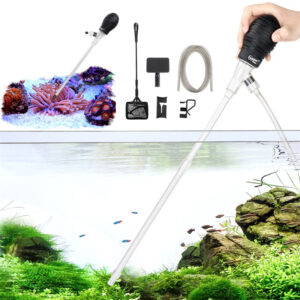

Leave a comment